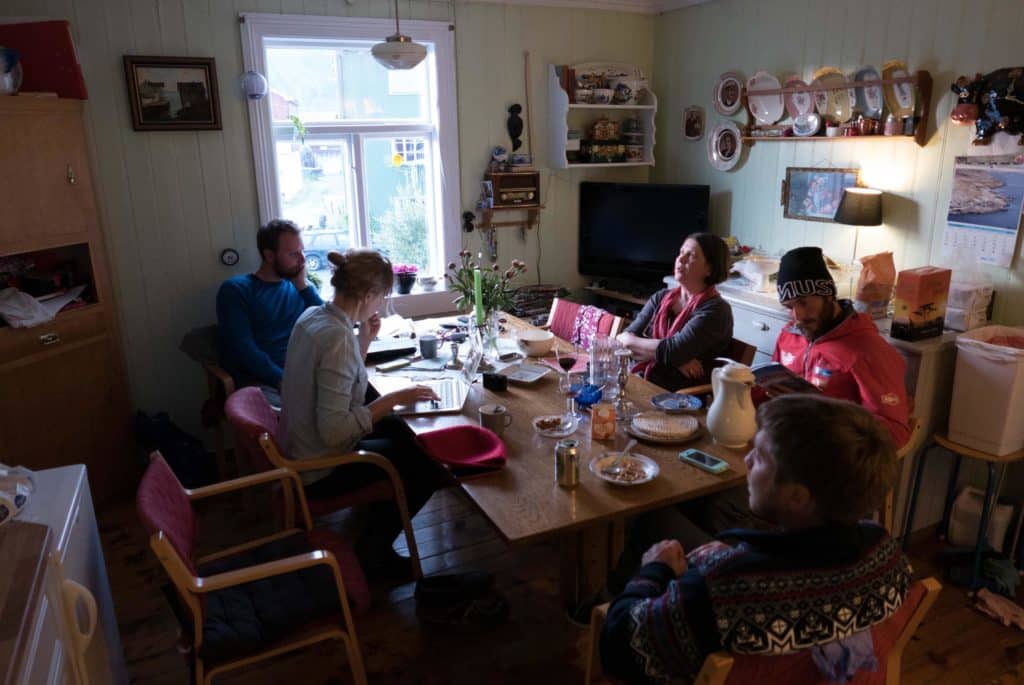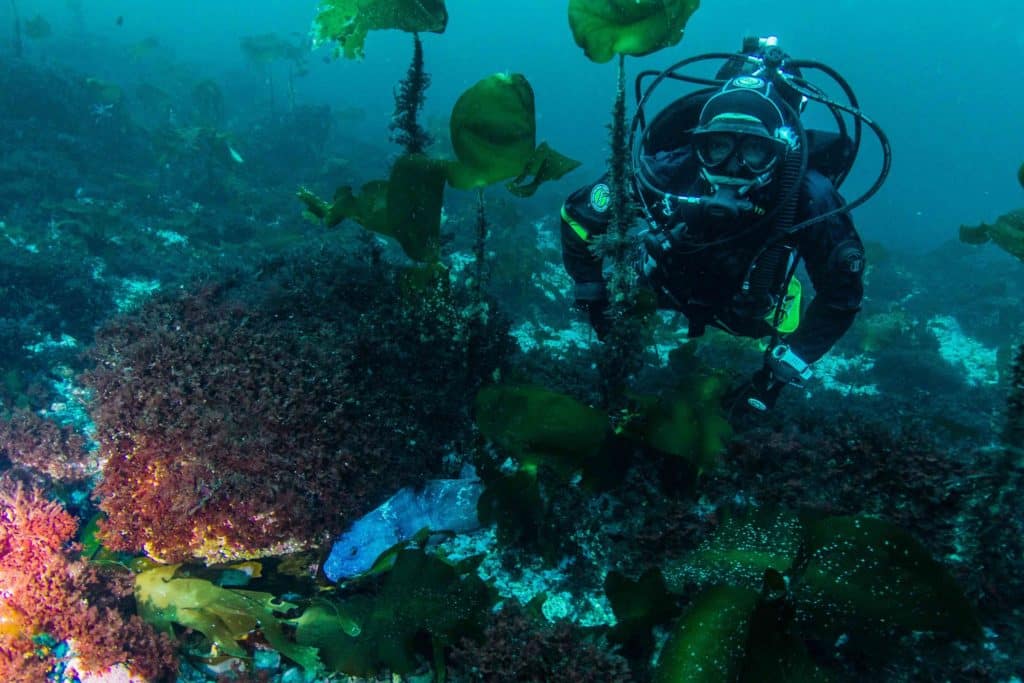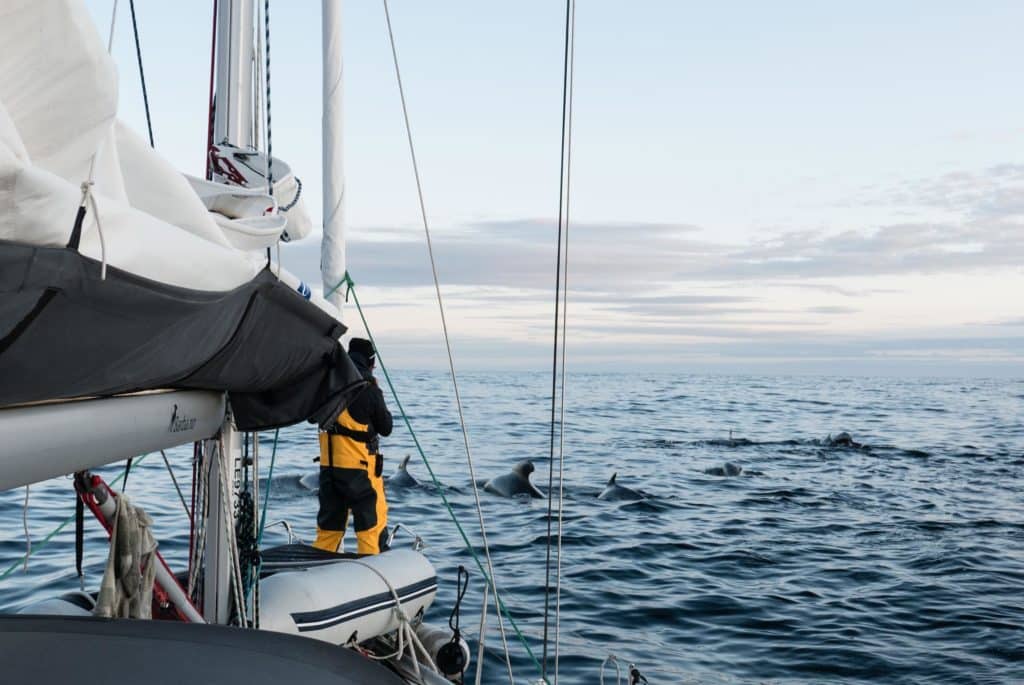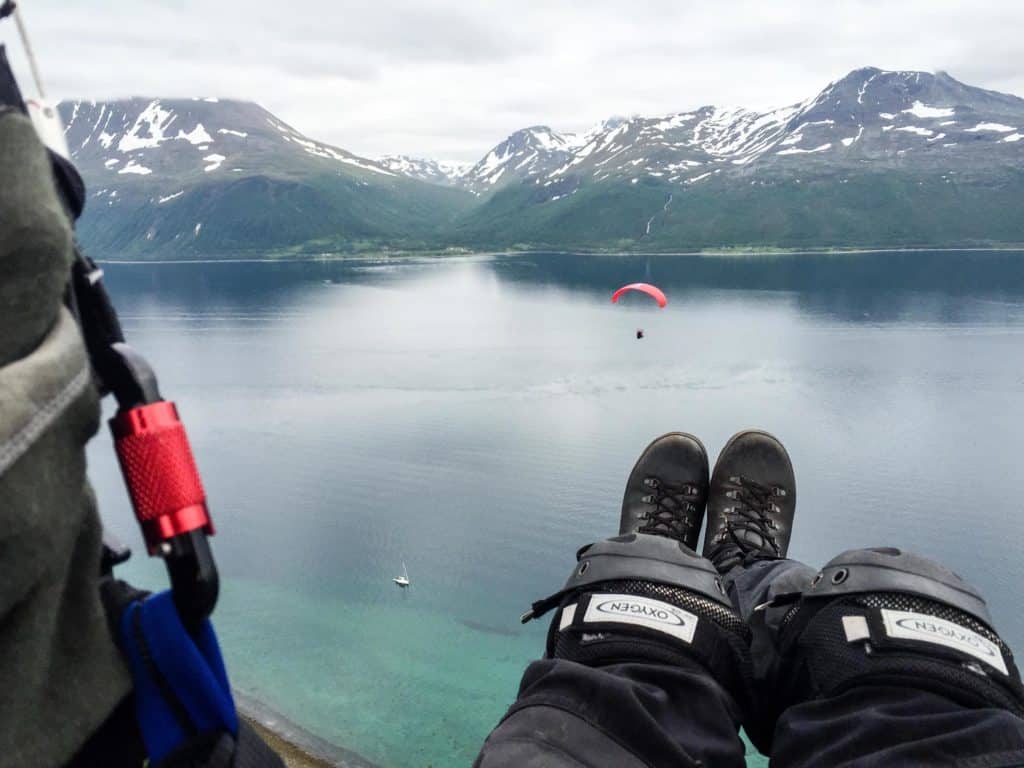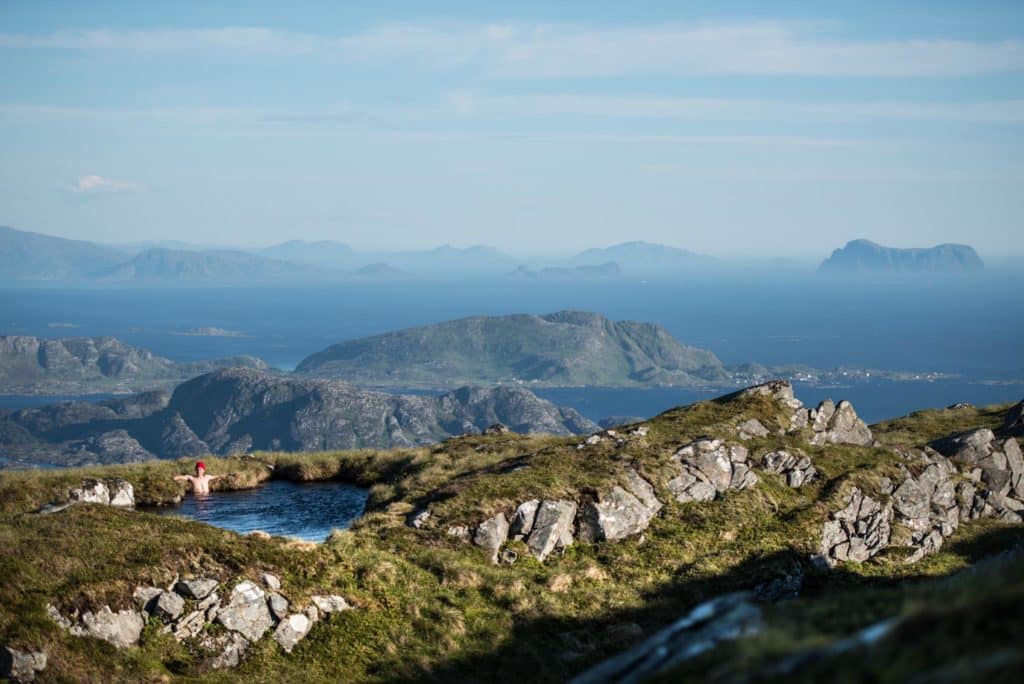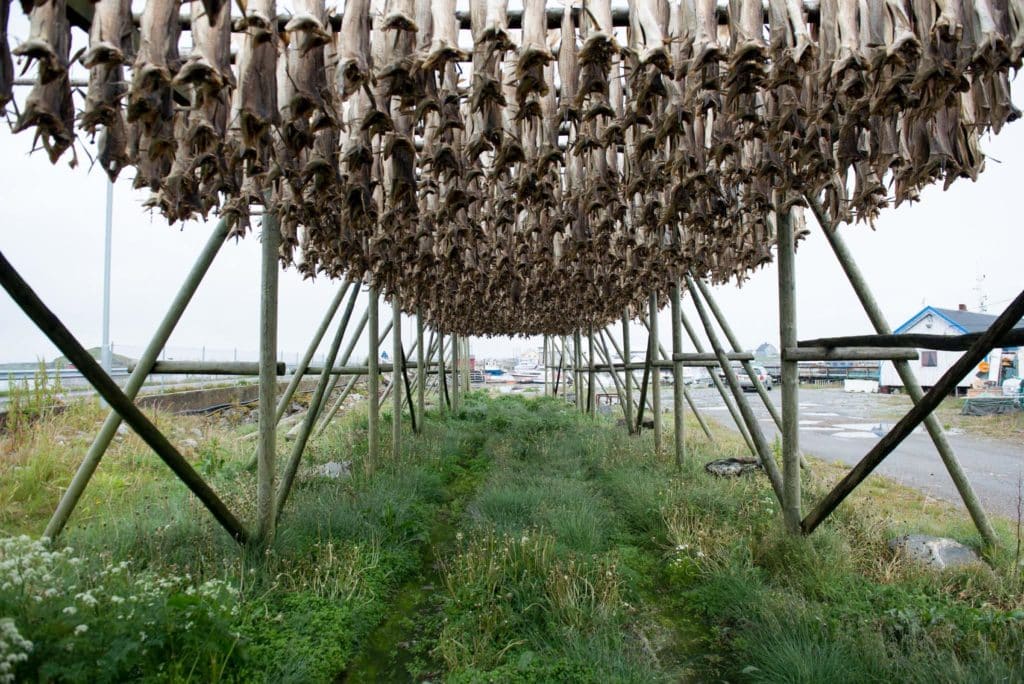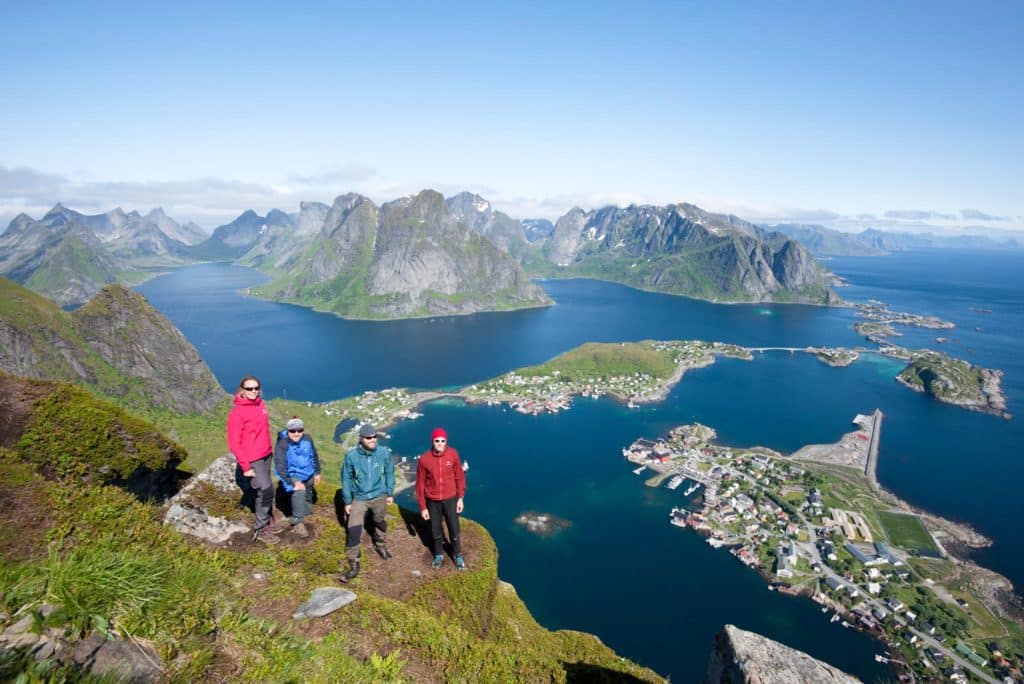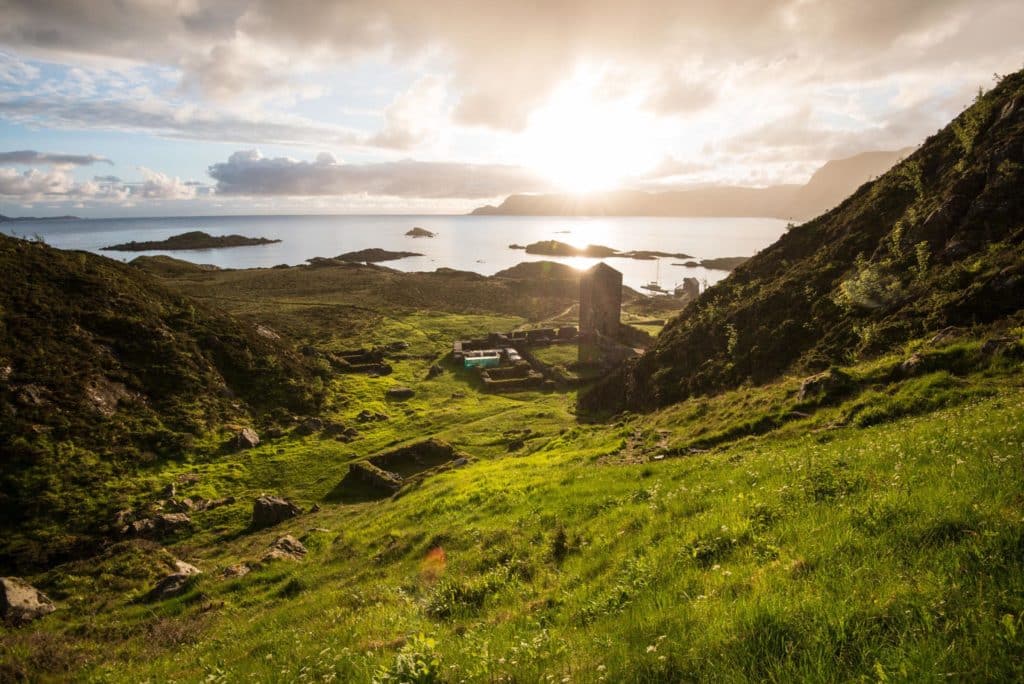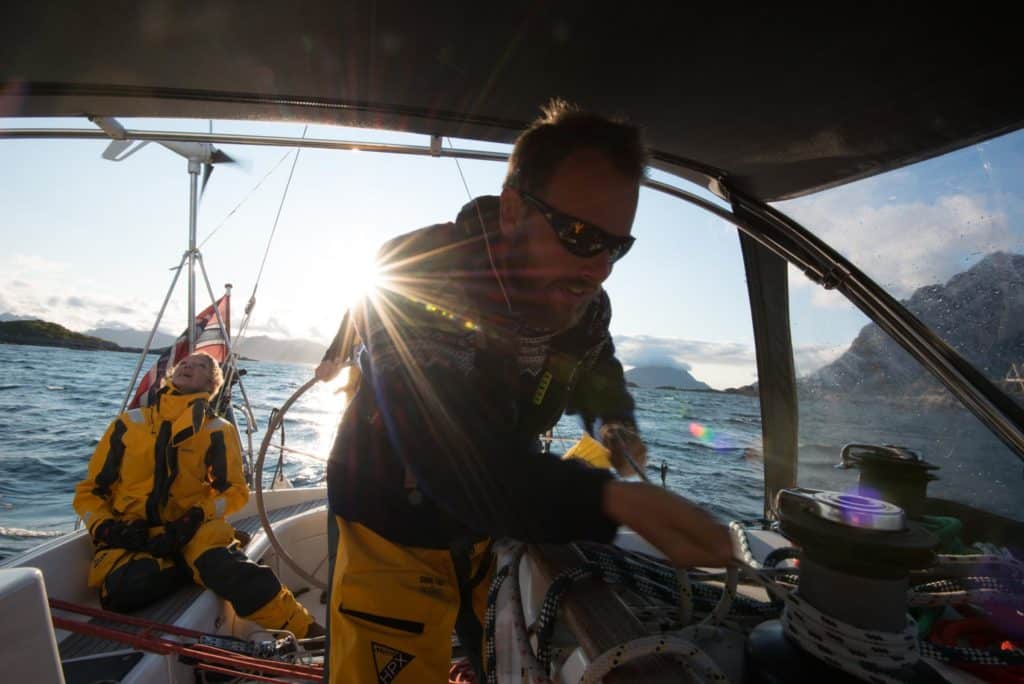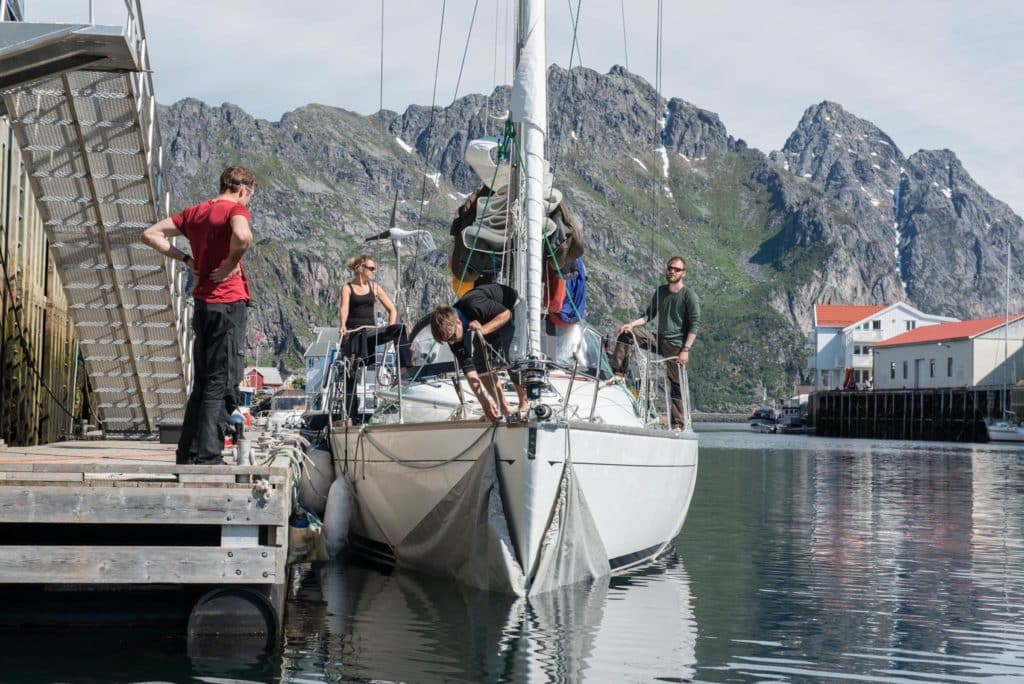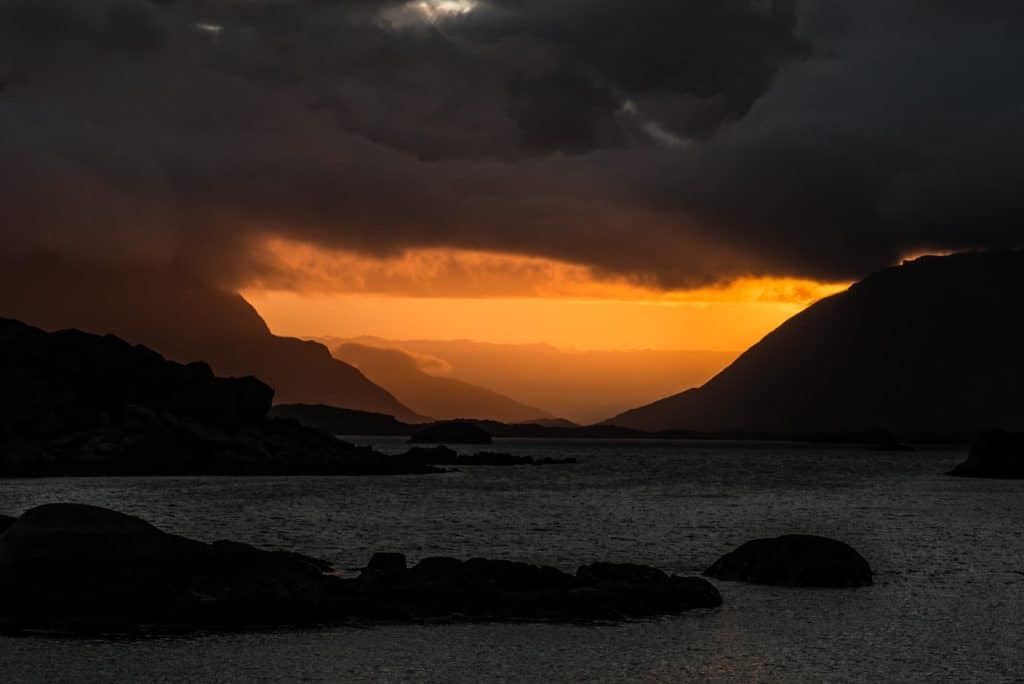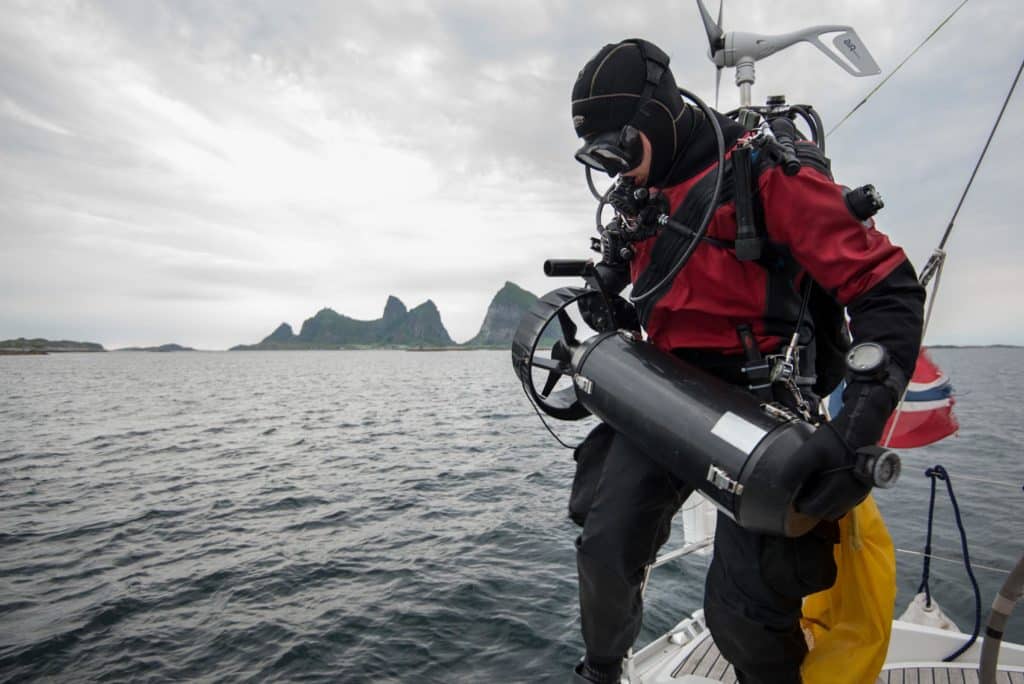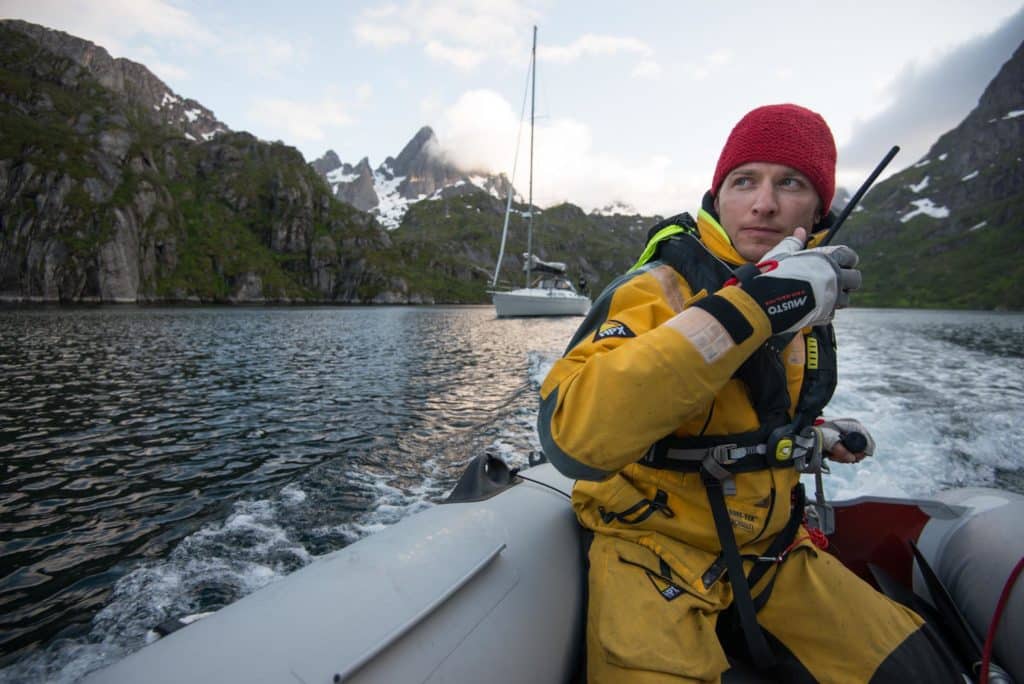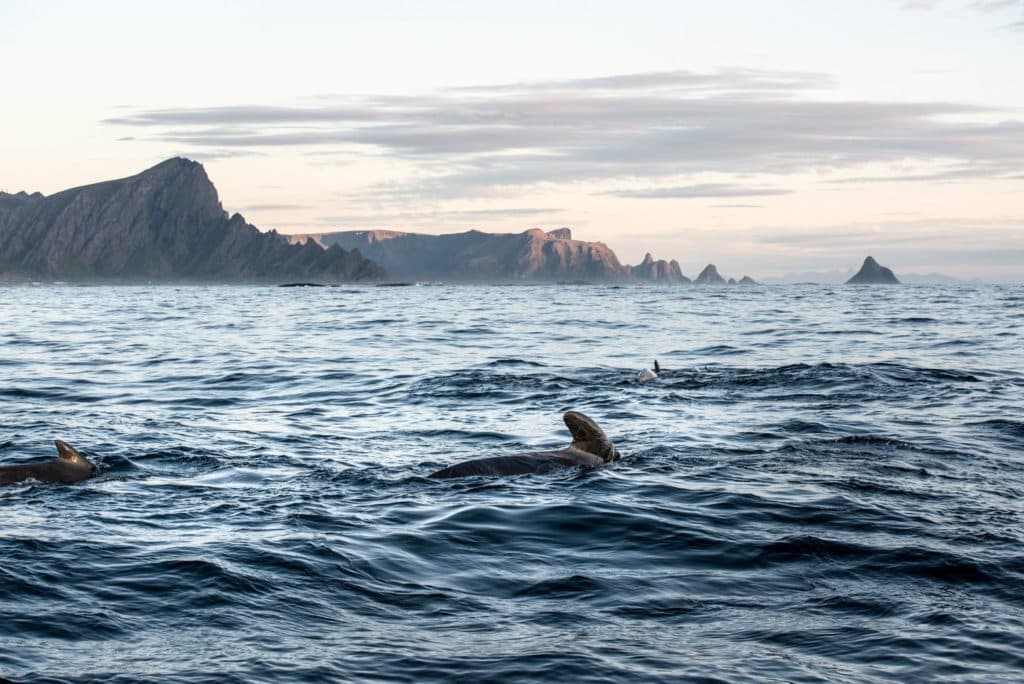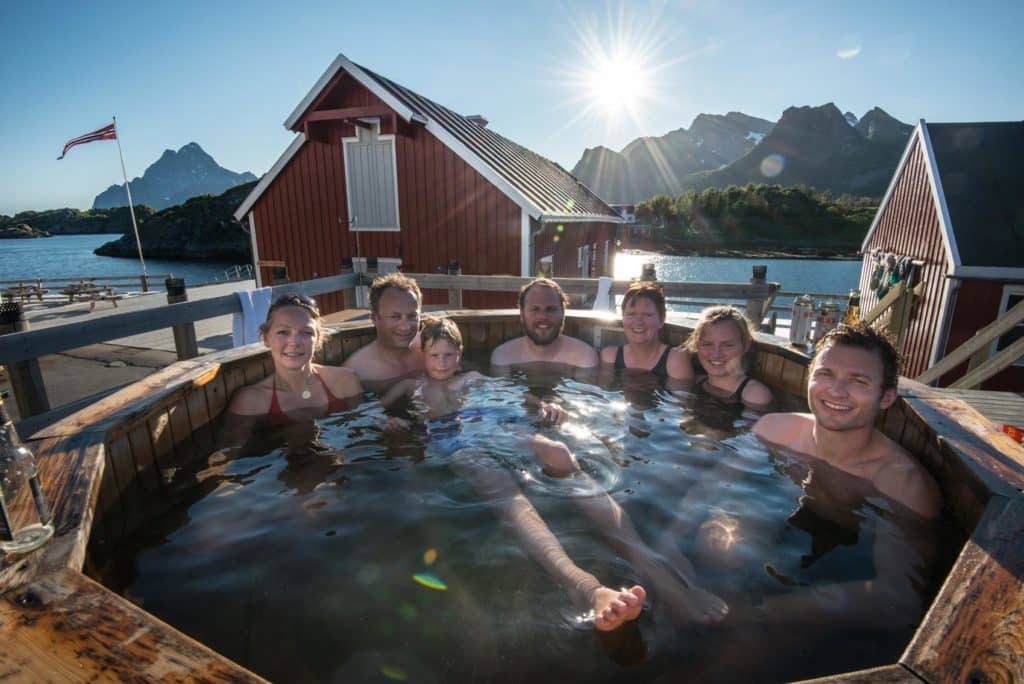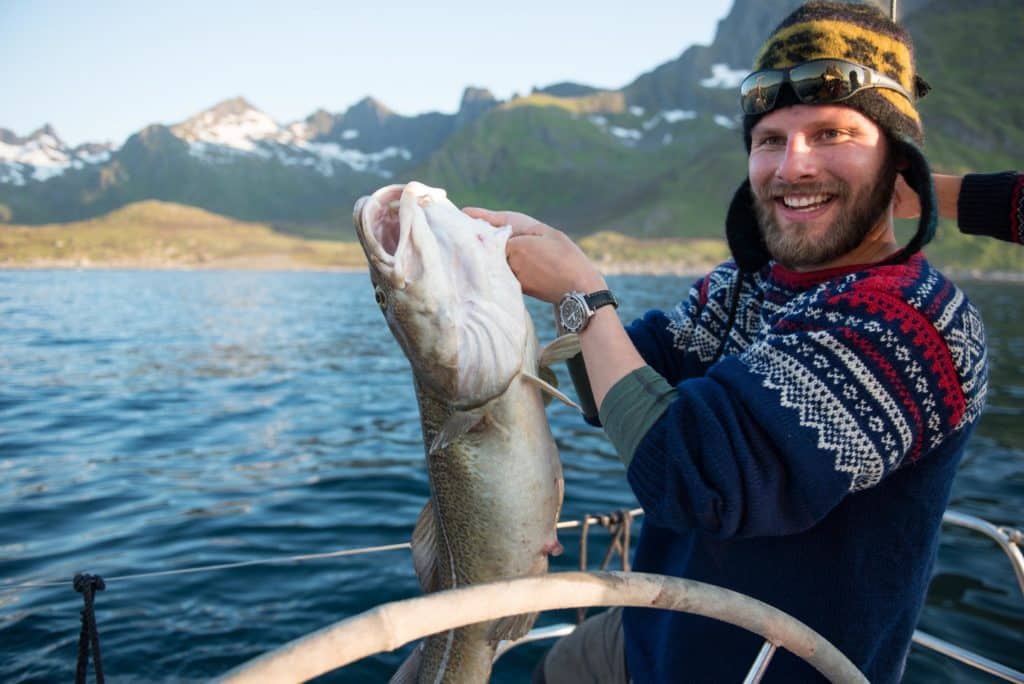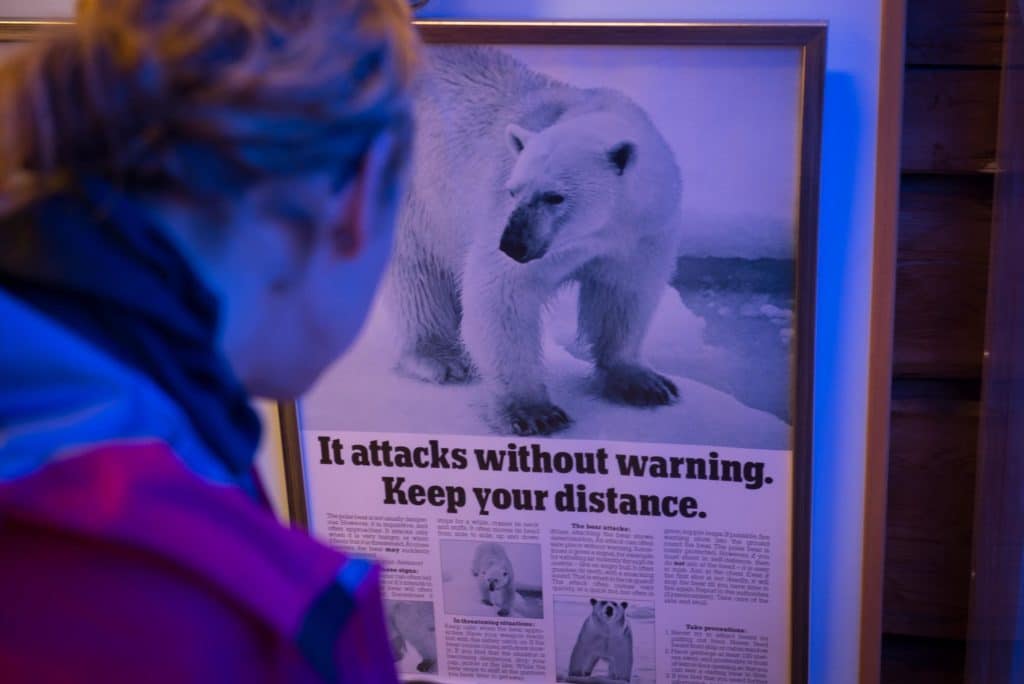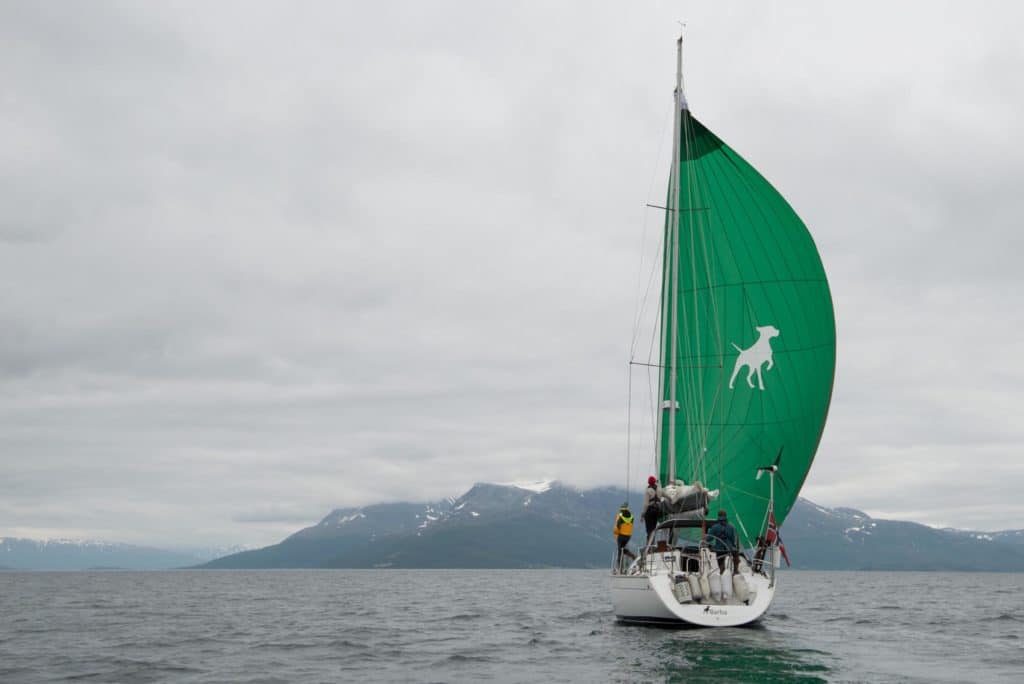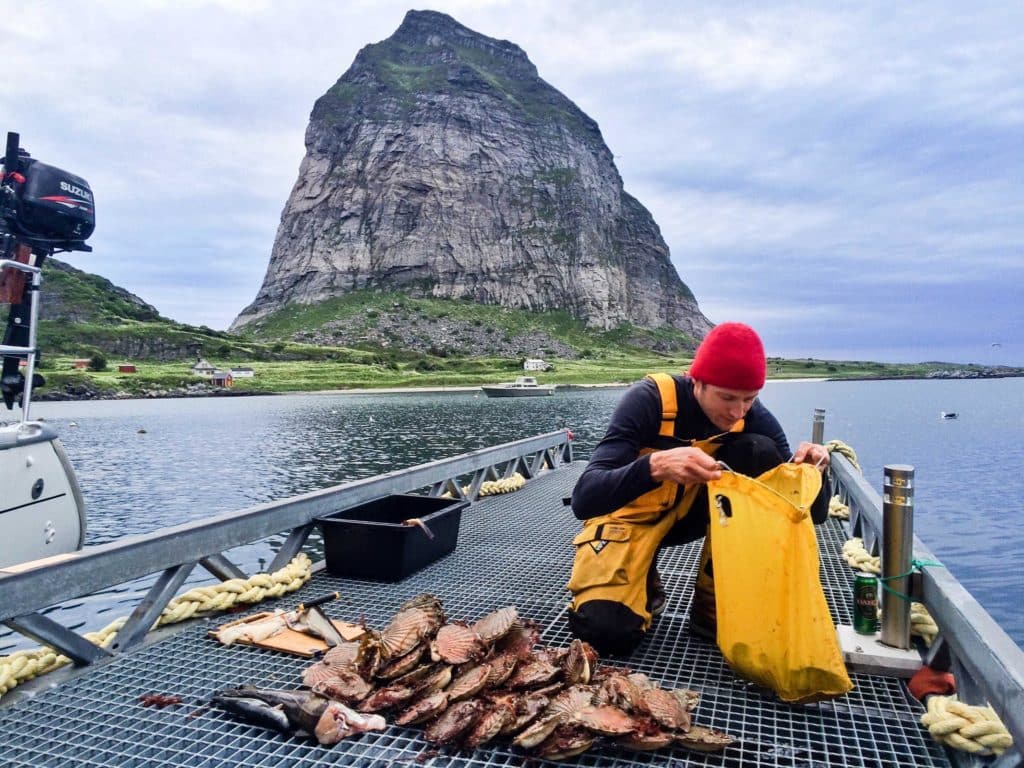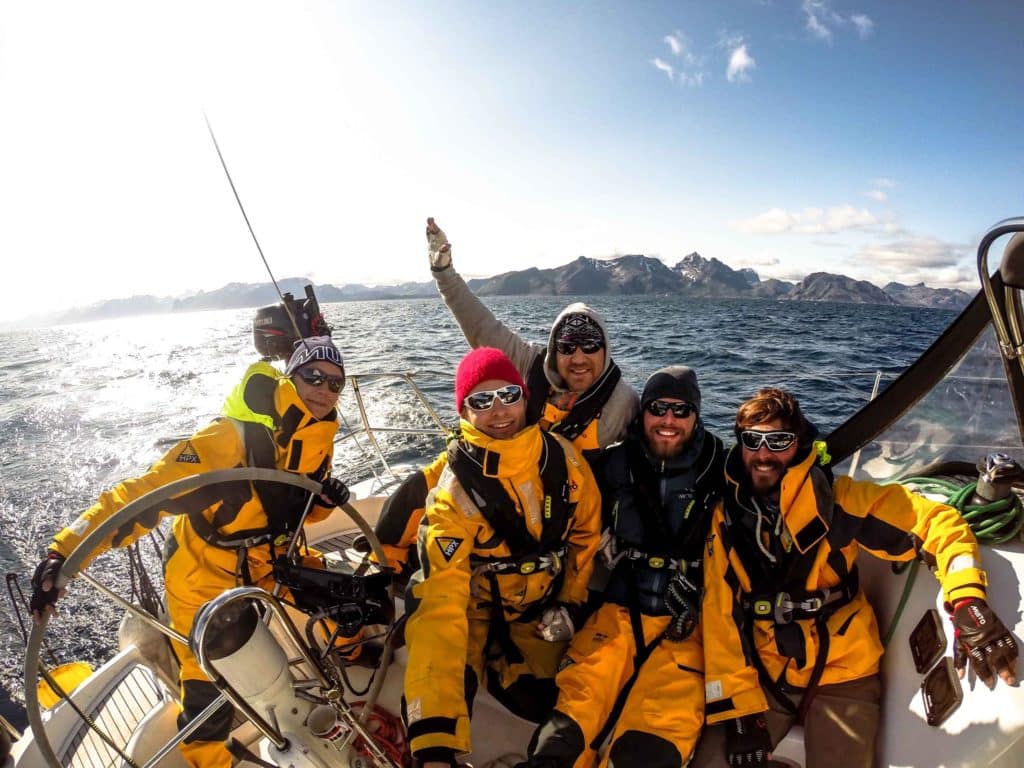Norway Distilled
It’s been 25 days since the crew of Barba left the home port in Stavanger, but today we’re giddy with the departure day nerves all over again. After three days in Tromsø preparing the boat in a harbor bobbing with a dozen or so other Longyearbyen-bound vessels (both smaller and far more luxurious than our own), we’re finally ready to make the three-day push to the southern tip of Svalbard. Norway’s wildest Arctic wonderland awaits.
The past three-plus weeks have played out largely as our Norwegian captain, Andreas B. Heide, envisioned they should, serving as sailing training for a diverse crew of five with experience levels as varied as their four nationalities.
We hail from Norway, the USA, Russia and Germany and speak eight languages between us. Some of us have sailed on great Arctic expeditions already (including to Novaya Zemlya and Greenland) while others were still working on perfecting the trickier knots when we left port in Stavanger. And with only one native English speaker in the crew, comms can be humorous at best and borderline perilous at worst (“Are you saying channel or shallow!?!?”).
But after three weeks practicing everything from maneuvering the dinghy and raising the new custom-made Ullman Sails gennaker to testing the emergency leak tarp and quick-rigging the storm sail, we all feel ready (if humbled) for the adventure that awaits.
The winds have been with us at times, when we got Barba up to eight knots. But we’ve spent more hours than we would have liked cruising on engine-power. Luckily, we get to sail back down this same coastline after Svalbard, and we hope the prevailing northwesterly winds will still be with us then.
With calm seas, for the most part, the biggest stressor has been having limited time in all of the splendid settings along Norway’s vast and varied coastline. We’ve been a bit rushed to make it to Tromsø and onward to Svalbard, eager to maximize the remnants of the short summer season. So we haven’t stayed longer than three days (and usually just one night) in any port along the way. But sailing 24 hours and being wakened for night watch is very nearly a pleasure in these northern latitudes, where the sun never sets in the summer and you can hardly distinguish dusk from the immediate golden rush of dawn that follows.
We’ve tested our new Santi drysuits to go scuba diving in waters chilled to 44 degrees F. And we’ve surfaced with the treasure of kamskjell – Norwegian scallops, the best in the world – with a backdrop of the impossible mountain peaks of the Træna archipelago.
And the bird-like men in our entourage have hurled themselves off fjord cliffs, perfecting flying with their new ultra-light Skyman paragliders before they have to strap on a gun to launch in Svalbard’s polar bear country.
There have been endless mountain peaks to summit along the way, some we’ve conquered and others we’ve added to the bucket list for the way back. And in Andenes, on the island of Andøya, we found ourselves surrounded by frolicking pilot whales just outside the harbor thanks to a local tip from a friend at the Norwegian Orca Survey.
The Lofoten Islands were as much of a highlight as we suspected they’d be. And thick fog that bummed us out in the southernmost island of Røst, known for its puffin and seabird colonies that we couldn´t really see, soon enough lifted to reveal the otherworldly peaks of Reine to the north. In Henningsvær, we were warmly welcomed by local friends who prepared a meal of tataki-style whale, whale stew and whale meatballs. It’s whaling season now in Norway, but only about 600 of the 1,200-animal quota of minke whales will be caught, with boats traveling from Lofoten to as far north as Bjørnøya (Bear Island) and Svalbard to hunt them. The meat tastes like a slightly gamier version of beef (not fishy at all). And we shared it alongside a cast of Lofoten characters who in turn shared their local knowledge of everything from surviving the cold in Svalbard, sei-fishing tips (pollack) and the best tactics for entering the water to snorkel with orcas and humpbacks, should we be lucky enough to encounter them.
Provisioning for the boat has been quite costly in Norway, especially in the remote island outposts where we often come into port. But we’ve been flooded with a nonstop supply of Omega-3 thanks to incredible fishing along the entire route. Onboard, it’s usually Russia versus Norway tossing out the lines in an attempt to catch the first fish of the day (competition is particularly fierce since the loser is charged with cleaning and filleting the winner´s catch). And cod, after haddock, after pollack, after mackerel after ginormous cod have all latched almost effortlessly onto our lines.
The ocean has given us so much so far, but we know at some point in this journey we will have debts to repay. And sailing to Svalbard to pay homage to some of the world’s most pristine Arctic Ocean environments feels like a mighty fine place to start.
Stay up to date on the crew’s adventures by visiting their blog..
The boat and concept are named in memory of the family dog, Barba, who looked after and partially raised me as a child. She was a great dog with an admirable appetite for the good and simple things in life such as food, friends and outdoor activities. As with any good friend and dog, Barba was above all a trustworthy and loyal companion. Interesting how in such a simple-minded creature you can find such great values…
The vessel itself is merely a tool for seeking adventure. And the true concept of Barba comes from all those who participate on the many nautical miles of adventures she has undertaken – and those that still lie ahead of her, of course, too. With this blog we hope to share some of our experiences as well as to inspire people with our own passion for nature and the values therein.
The adventures will all be in the spirit of my four-legged friend, Barba.
– Andreas
Check out the next leg of the crew’s adventure in Svalbard here.
